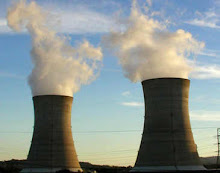
Barack Obama’s presidential election brings hope and excitement to many Americans. His promise of change created hope throughout the entire nation, and many citizens wait in anticipation to witness this change. Obama’s expressed commitment to improving the environmental condition of the United States allows those suffering from environmental injustice to be among the most anxious to see new legislation that will assuage their burden, as clear and effective legislation combating environmental injustice has slowly yet inconsistently been entering into recent political agendas.
During the primary campaign season, Hillary Clinton introduced the Environmental Justice Renewal Act, which is designed to administer federal funds towards efforts to improve atmospheric conditions in America’s most pollution-plagued communities. Clinton also helped sponsor another proposal which would implement oversight and mitigation of detrimental health effects of power plants, waste management institutions, and other industrial infrastructure. Hillary Clinton presented a justifiable assertion of her support of the environmental justice movement. Since she lost the primary vote and did not have the chance to become America’s leader, can we expect Obama’s involvement in the movement to match up to Hillary’s previous efforts?
President Obama has undoubtedly exhibited concern for environmental improvement and commitment to further its growth, as he focused on energy efficiency in his final presentation to the nation, his infomercial on October 29. He introduced the McKinstry Company as the example of the direction he will guide the country in regards to environmental progress. He pledged to invest $15 million dollars in an energy efficiency plan that would improve the environmental condition of the national community, including creating five million clean energy jobs for domestic citizens. Although this is a commendable, and relatively unprecedented, embracement of environmental awareness, it does not directly provide a solution to the environmental injustice that exists. Obama plans to find and utilize new resources for energy, such as solar power, wind, and biofuels, which would reduce pollution caused by emissions and other toxins. But will these changes reach the low-income and minority communities, or will they remain concentrated in the more affluent areas, as have other environmental initiatives? What portion of the five million newly created clean energy jobs will be offered to the citizens of the communities which suffer most from environmental hazards? Will the central problem of environmental injustice be combated, or will it continue to be looked over in the light of national progress?
Further, as Obama ran a deracialized campaign, and will most likely manage a deracialized political agenda, will he hesitate to address an issue that is largely racial? Hopefully, Obama’s explicit recognition of the obstacles that need to be overcome in regards to the environment is a testament to the fact that he will thoroughly endeavor to address all aspect of America’s environmental dilemmas, not solely those that are apparent on a national scale.
For Further Reading:
Griscom, Amanda 2007. “Not in Whose Backyard?” Retrieved from http://www.nytimes.com/2007/09/02/magazine/02wwln-essay-t.html?_r=1. 5 November 2008.
“Efficiency Obama” Retrieved From http://getenergysmartnow.com/2008/10/30/efficiency-obama/. 5 November 2008.

No comments:
Post a Comment